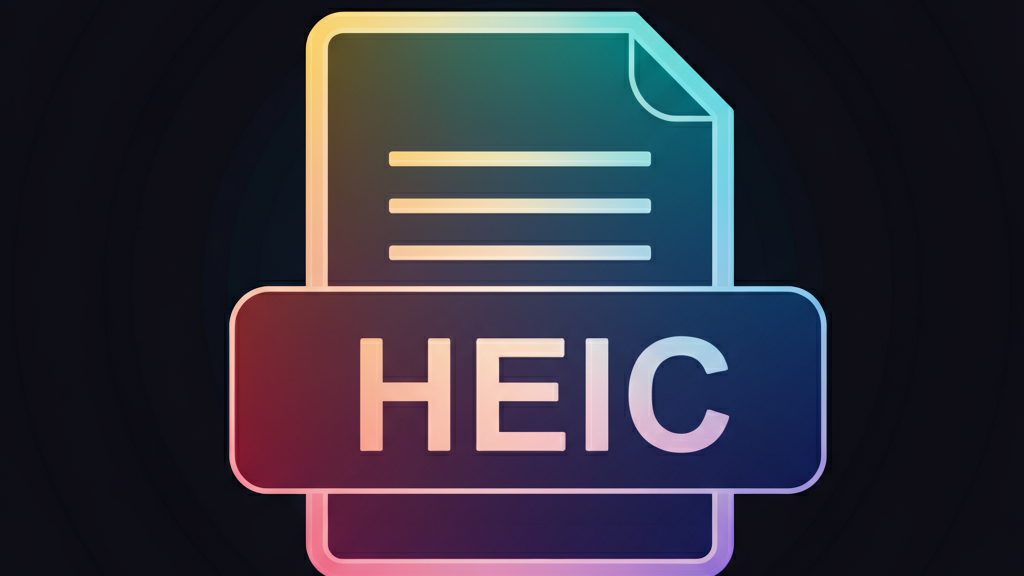Images make up a significant portion of the content we consume online, whether in social media posts, websites, or cloud-stored photo libraries. Yet, few pause to consider how these images are compressed to save storage space and bandwidth while maintaining visual quality.
This blog dives into the fundamentals of image compression, explores how the HEIC format solves modern challenges, and why understanding these concepts is increasingly important in our image-driven world.
The Basics of Image Compression

What is Image Compression?
Image compression is a technique used to reduce the size of an image file without significantly degrading its quality. This is done by removing redundant or less noticeable data from the image. Compression makes it easier to store, share, and manage image files across devices, the web, and other platforms.
There are two main types of image compression:
- Lossy Compression: This removes some image data permanently to reduce file size. The process can slightly compromise quality, but when done correctly, the loss isn’t noticeable to the human eye. Formats using lossy compression include JPEG and HEIC.
- Lossless Compression: This method preserves all the image data, ensuring no quality is lost when the file is compressed and decompressed. Formats like PNG and GIF use lossless compression.
Why Smaller Files Matter?
Small file sizes play a huge role in making our digital world run smoothly:
- Efficient Storage: With billions of images taken daily, smaller files mean less storage consumption on your devices or cloud accounts.
- Reduced Bandwidth: Compressed files require less data to transfer, making uploads, downloads, and sharing faster.
- Faster Website Loading Times: Images are often the main culprits behind sluggish websites. Compressing images speed up loading times, positively affecting user experience and SEO rankings.
Understanding these basics is the first step in appreciating the innovations in image formats like HEIC.
HEIC: A Modern Solution
What is HEIC?
HEIC, or High-Efficiency Image Coding, represents the next step forward in image compression. First introduced by Apple in 2017, HEIC leverages HEVC (High-Efficiency Video Codec) technology to offer dramatically smaller file sizes while retaining superior image quality.
How Does HEIC Compare to JPEG?
When comparing HEIC to older JPEG formats, HEIC offers several advantages:
- Compression Efficiency: HEIC files are typically 50% smaller than JPEGs of the same quality. This is particularly valuable for users capturing high-resolution photos on modern smartphones.
- Image Quality: HEIC retains more details and dynamic range, meaning photos look crisper and lifelike even after compressing.
- Advanced Features: HEIC supports transparent backgrounds, multiple images within a single file (ideal for Live Photos), and rich metadata like depth information for added flexibility.
How HEIC Works

Behind the Scenes of HEIC Technology
HEIC works using the same technology as HEVC (H.265), a codec originally designed for compressing high-quality video files. By adapting this technology for images, HEIC delivers unmatched efficiency.
HEIC files act as a container format, holding not just the image but also metadata and other supplementary data, such as edits and multiple image variations. This makes HEIC ideal for creative professionals who need to retain more than just static photo information within their files.
Use Cases and Benefits of HEIC
Saving Space Without Compromise
Whether you’re a smartphone user capturing thousands of photos or a cloud storage subscriber juggling limited GBs, HEIC’s reduced file size offers you more room for additional media while maintaining quality.
Faster Loading Websites
If you’re managing a website, HEIC-optimized images translate into faster loading times, which boosts user satisfaction and supports your site’s SEO performance.
Better for Sharing and Archiving
HEIC’s smaller file sizes reduce upload and download times for sharing images via email, messages, or social platforms. Its high quality makes it equally suited for archiving personal photos or professional work without sacrificing data fidelity.
Challenges and Compatibility
While HEIC offers numerous benefits, it isn’t without challenges.
Compatibility Concerns
One key issue with HEIC is compatibility. Many older devices or software, especially those running Microsoft operating systems or Android (pre-version 9), don’t support HEIC natively. This could create hassles when sharing or accessing HEIC images.
- Solution: Converting HEIC files to more common formats like JPEG is straightforward using apps like HEICtoJPEG or integrated conversion features in modern devices.
Licensing and Patents
HEIC’s underlying technology (HEVC) is patent-encumbered, requiring device manufacturers or software developers to pay royalties. This has led some platforms to rely on free alternatives like VP9 or AVIF instead.
The Future of Image Compression
Technology Continues to Evolve
The adoption of HEIC has paved the way for further innovation in image compression. With the rise of machine learning, AI-based algorithms may soon create even smarter compression techniques that can better balance file size and quality.
Improvements in HEIC and Beyond
HEIC itself might expand its use cases, integrating seamlessly with modern technologies like 5G networks, augmented reality (AR), and high-resolution content streaming.
Emerging Trends
Formats like AVIF (based on the AV1 codec) have recently gained traction, offering similar benefits to HEIC while being royalty-free. This competitive landscape ensures that image compression technology continues developing rapidly to meet users’ needs.
Why HEIC Deserves Your Attention

Understanding image compression isn’t only for developers or photographers; it’s crucial for anyone managing data or consuming media online. HEIC stands out as a modern solution to the increasing demand for high-quality, low-storage image formats. Its advanced compression efficiency, superior image quality, and practical applications make it a strong contender for the future.
If you’re ready to upgrade how you store, share, and manage media, consider integrating HEIC into your workflow. And if compatibility issues feel daunting, don’t worry—conversion solutions exist to make the transition seamless.
Start exploring image formats that better suit your needs and say goodbye to oversized, outdated files. The future of image storage is here, and it’s HEIC.

Leave a Reply